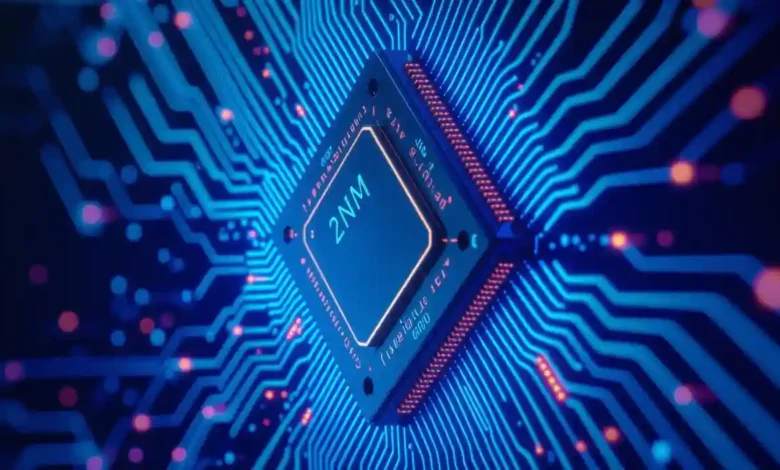The 2nm Revolution: How Smartphones of 2026 Will Shape the 2030s

The relentless march of semiconductor technology continues to redefine what’s possible in the palm of our hands. As we stand on the cusp of the 2nm chip era, with breakthroughs anticipated for smartphone launches in late 2026 from giants like Apple and MediaTek, and Samsung already deep into development with its 2nm Exynos 2600 for the S26 series, a pivotal question emerges: How far will chip technology evolve by the 2030s, and what incredible leaps in power and capability can we expect from our smartphones?
The Dawn of 2nm: A Glimpse into 2026’s Powerhouses
The shift from current 3nm and 4nm nodes to 2nm represents a significant leap in transistor density and efficiency. This isn’t just about shrinking components; it’s about unlocking a new realm of performance.
- Apple’s A-Series Chip (Late 2026): Imagine an iPhone that renders console-quality graphics with breathtaking fluidity, processes AI tasks instantaneously, and offers battery life that stretches beyond current expectations. Apple’s notorious optimization, coupled with a 2nm A-series chip, will likely deliver an unparalleled user experience, redefining mobile gaming, augmented reality, and on-device AI capabilities. Expect real-time language translation without latency, sophisticated photographic computational capabilities, and seamless integration with a burgeoning ecosystem of smart devices.
- MediaTek’s Dimensity Flagship (Late 2026): MediaTek, a formidable player in the mobile SoC market, will leverage 2nm to power its next-generation Dimensity flagship. This will democratize high-end performance, bringing premium features to a wider range of devices. Think advanced multi-tasking, superior 5G/6G connectivity, and energy efficiency that allows for always-on AI features without significant power drain. Their focus on customizability and integration will likely enable innovative form factors and specialized use cases.
- Samsung’s Exynos 2600 (S26 Series): Samsung’s commitment to its in-house Exynos line, with the 2nm Exynos 2600 already in development for the S26 series, signals a strategic move to differentiate its flagship offerings. This could mean a renewed focus on integrated AI accelerators, enhanced graphics processing units (GPUs) co-developed with AMD (building on their current partnership), and perhaps even custom security architectures that leverage the tight integration of hardware and software within the Samsung ecosystem. Expect the S26 to push boundaries in mobile photography, video editing, and immersive display experiences.

Beyond 2nm: The Horizon of the 2030s
The pace of innovation in semiconductor manufacturing is not slowing down. While reaching the physical limits of silicon has been a recurring concern, new materials and architectural innovations are continuously extending the roadmap.
- Sub-1nm Nodes (1.4nm, 1nm, and beyond): By the early to mid-2030s, we could see the widespread adoption of sub-1nm process technologies, such as 1.4nm and even 1nm. These advancements will likely rely on revolutionary transistor structures like Gate-All-Around (GAA) or even more exotic designs such as Complementary FET (CFET) architectures. This will lead to unimaginable transistor densities, enabling exponentially more complex and efficient integrated circuits.
- New Materials and Architectures: Silicon’s reign, while long and dominant, might see challengers. Research into materials like 2D materials (e.g., graphene, molybdenum disulfide) and carbon nanotubes offers potential for even smaller, faster, and more energy-efficient transistors. Furthermore, the integration of photonics (using light instead of electrons) for specific computational tasks could dramatically increase data transfer speeds within chips.
- Quantum Computing on the Horizon? While full-fledged quantum computers in smartphones by the 2030s is a distant dream, hybrid approaches integrating specialized quantum co-processors for specific tasks (like complex optimization problems or advanced cryptography) could start to emerge. This would be a game-changer for data security and certain scientific computations.
The Superpowers of Smartphones in the 2030s:
With these chip advancements, the smartphones of the 2030s will transcend their current definition, becoming truly intelligent companions.
- True Artificial General Intelligence (AGI) on Device: Imagine a smartphone that doesn’t just assist but genuinely anticipates your needs, learns your preferences with incredible nuance, and proactively manages your digital and physical life. On-device AGI will enable hyper-personalized experiences, seamless automation, and intuitive human-computer interaction that feels almost telepathic.
- Immersive Holographic and Mixed Reality: Forget clunky VR headsets. The processing power and display technologies of the 2030s will enable glasses-free holographic projections directly from your phone, creating truly immersive mixed reality experiences anywhere, anytime. Education, entertainment, and professional collaboration will be transformed.
- Ubiquitous Sensor Fusion and Environmental Awareness: Smartphones will integrate an even more extensive array of sensors, capable of understanding their environment with unprecedented detail. Think real-time air quality monitoring, advanced medical diagnostics through skin contact, and precise object recognition for seamless interaction with the physical world. Your phone could become a personal health guardian and an indispensable tool for navigating complex environments.
- Hyper-Personalized Computing and “Digital Twins”: As AI becomes more sophisticated, your smartphone could host an incredibly detailed “digital twin” of yourself, capable of making minor decisions, filtering information, and managing routine tasks, freeing up your cognitive load for more important endeavors. This raises interesting ethical and philosophical questions about autonomy and digital identity.
- Unbreakable Security and Privacy: With dedicated hardware security modules leveraging quantum-safe cryptography, smartphones in the 2030s will offer unparalleled protection against cyber threats, personal data breaches, and unauthorized surveillance. Biometric authentication will evolve beyond fingerprints and facial recognition to include even more sophisticated and unique biological markers.
- Sustainable and Self-Healing Devices: Advances in materials science and miniaturization will lead to smartphones with significantly reduced environmental footprints, longer lifespans, and potentially even self-repairing capabilities for minor damage.
Challenges and Considerations:
Of course, the path to the 2030s is not without its hurdles.
- Power Consumption vs. Performance: While efficiency improves with smaller nodes, the sheer increase in computational power still demands significant energy. Battery technology will need to keep pace, perhaps through solid-state batteries or even novel energy harvesting methods.
- Cost and Accessibility: Cutting-edge chip manufacturing is incredibly expensive. Ensuring these advanced technologies are accessible and affordable for a global market will be a continuous challenge.
- Ethical Implications of AGI: As AI on devices becomes more powerful, the ethical considerations around privacy, bias, decision-making, and job displacement will become even more pronounced and require careful societal navigation.
- Thermal Management: Packing billions of transistors into a tiny space generates heat. Innovative cooling solutions will be critical to sustain peak performance without throttling.
Conclusion:
The journey from 2nm chips in 2026 to the vastly more powerful and intelligent smartphones of the 2030s promises to be nothing short of revolutionary. We are entering an era where our mobile devices will transcend their current roles, becoming indispensable extensions of ourselves, capable of understanding, assisting, and even anticipating our every need. The future is not just smart; it’s profoundly intelligent, deeply integrated, and endlessly fascinating. The question isn’t whether our phones will get more powerful, but rather, what incredible new realities will that power unlock for humanity?
For more Odinozz Tech articles, click here.
Follow Odinozz on social media. Click here.



